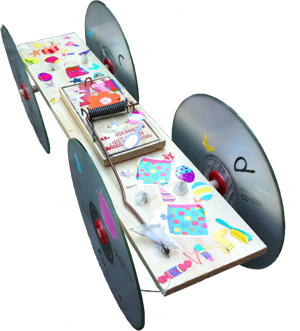
Amidst grim reports this week that California schools are "failing to invest enough time, money and training to teach science well," and that only one out of 10 elementary school students gets to play with hands-on science experiments, a shining counter-example is happening at the Nueva School in the wealthy San Francisco suburb of Hillsborough.
Sixth-grade students are using Wii remote controls to collect scientific data on things like positive and negative acceleration and thinking about conceptual issues like the difference between engineering and science.
Led by Stanford researchers, the class is using Wii remote controls (available online for anywhere from $15 to $40) to create things like a rat-trap car, a marble roller-coaster, and balloon-powered vehicle to test different theories.
With the rat-trap car, students have created a Wii-strapped vehicle with CDs as wheels, like a skateboard. They've already experimented with smaller mousetraps and lighter batteries to see if the cars would go faster, but landed on the rat trap as the best way to measure the information they needed.
The main objective of the experiment is not necessarily to measure speed, but to show students how to capture data like scientists do. Kids are typically confused by graphs, but with the Wii experiment, they could see the horizontal, vertical, and lateral aspects of the accelerometer.
"Kids see patterns in data," said Wendy Ju, one of the Stanford researchers working with the students at the Innovative Learning Conference held at Nueva recently. "What does that data do to contribute to their designs?"

